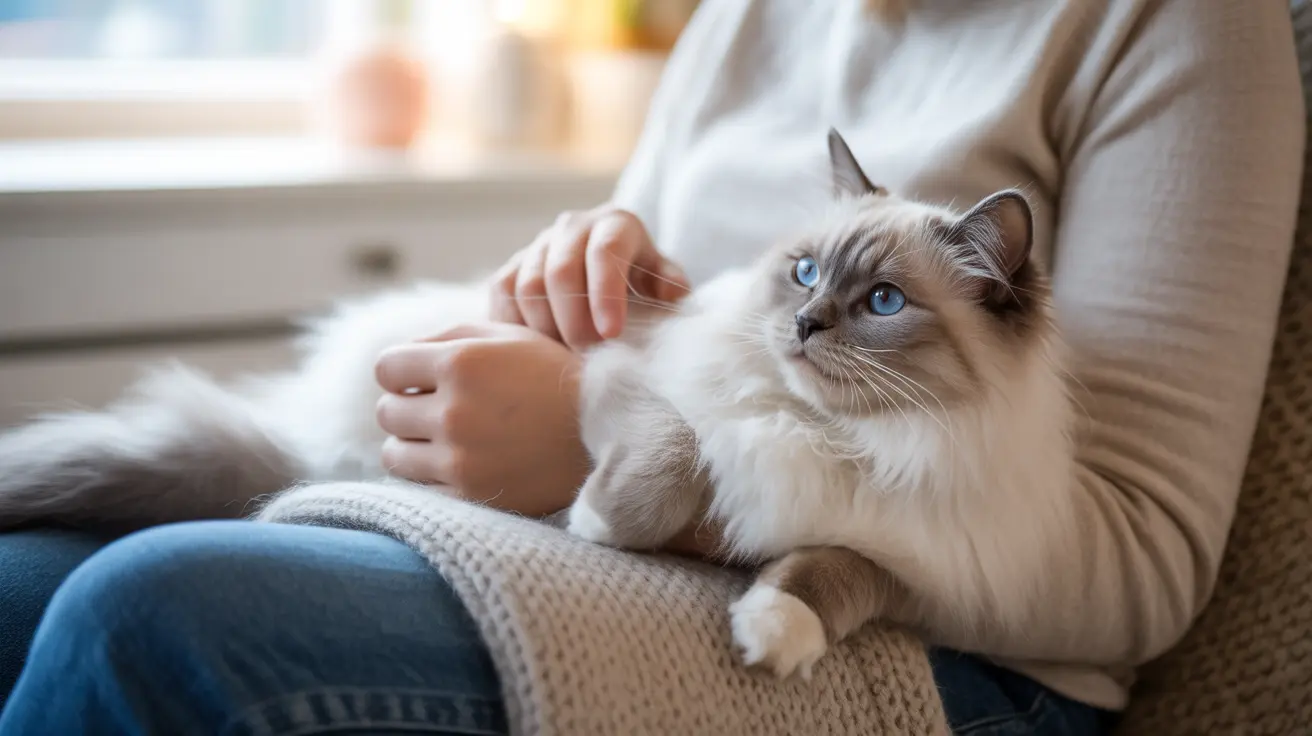The Genetic Blueprint: Born to Cuddle?
Certain cat breeds are naturally predisposed to being more affectionate and sociable. Ragdolls, known for their relaxed temperament, often earn their nickname by going limp in their owner's arms. Similarly, Maine Coons, Persian cats, and Siamese breeds typically show strong lap cat tendencies due to their genetic makeup.
However, genetics alone don't determine whether a cat will become a lap dweller. Even within the same litter, kittens can display vastly different personalities and comfort levels with human contact.
Early Life Experiences Matter
The first few weeks of a kitten's life play a crucial role in determining their future relationship with humans. Kittens that receive positive human interaction between 2-7 weeks of age are more likely to develop into sociable adults who enjoy close contact.
Cats that missed this critical socialization window or experienced trauma during early development might be more hesitant to become lap cats, regardless of their genetic predisposition.
The Comfort Factor: More Than Just Affection
Many cats seek out laps primarily for warmth and comfort. With an average body temperature higher than humans, cats naturally gravitate toward warm spots. Your lap provides the perfect combination of warmth, elevation, and security.
The texture of your clothing or blankets can also influence a cat's decision to settle in your lap. Soft, warm materials are particularly inviting to most cats.
Building Trust and Security
For many cats, choosing to sit in someone's lap represents a significant display of trust. When a cat selects your lap as their resting spot, they're putting themselves in a vulnerable position, showing they feel safe and secure with you.
This behavior often develops gradually as your bond strengthens. Some cats may take months or even years before they feel comfortable enough to become lap cats.
Alternative Forms of Affection
Not being a lap cat doesn't mean your feline friend isn't affectionate. Many cats show their love through different behaviors, such as:
- Following you around the house
- Sleeping next to you
- Slow blinking
- Head-butting
- Purring in your presence
Frequently Asked Questions
Why are some cat breeds, like Ragdolls and Maine Coons, more likely to become lap cats?
These breeds have been selectively bred for generations to have friendly, sociable temperaments. Their genetic makeup predisposes them to seek human company and physical contact more than some other breeds.
How does a cat's early socialization affect its likelihood of becoming a lap cat?
Early positive experiences with humans during the critical socialization period (2-7 weeks) significantly increase the likelihood of a cat becoming comfortable with close human contact, including lap sitting.
What role does warmth and comfort play in why some cats prefer to sit on laps?
Cats are naturally drawn to warm, comfortable spaces. Human laps provide ideal warmth, softness, and elevation, making them particularly attractive resting spots for heat-seeking felines.
How can I encourage my cat to become more comfortable sitting on my lap without forcing it?
Create a welcoming environment with soft blankets, remain calm and still, and reward any lap-sitting attempts with treats or gentle pets. Never force your cat onto your lap, as this can create negative associations.
Does a cat sitting on your lap always mean it's affectionate or could it have other reasons?
While lap-sitting often indicates affection, cats may also choose your lap for practical reasons such as warmth, height advantage, or security. All these motivations can combine to create a positive bonding experience.
Final Thoughts
Whether your cat is a dedicated lap dweller or prefers to show affection in other ways, understanding and respecting their individual preferences is key to maintaining a strong bond. Remember that each cat is unique, and their choice to sit on your lap (or not) doesn't define the depth of their attachment to you.






